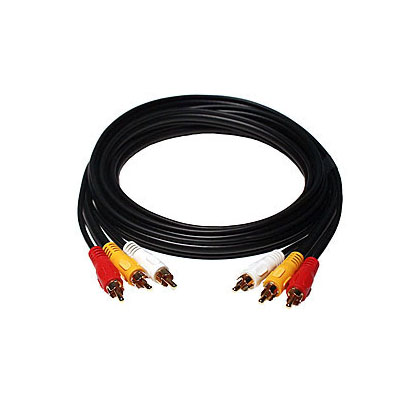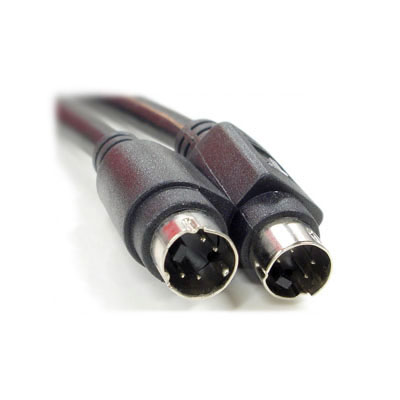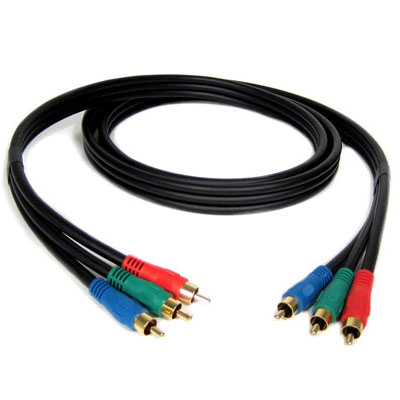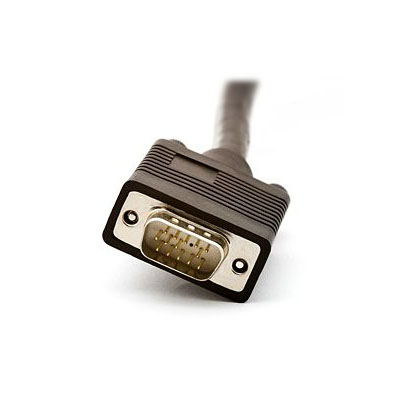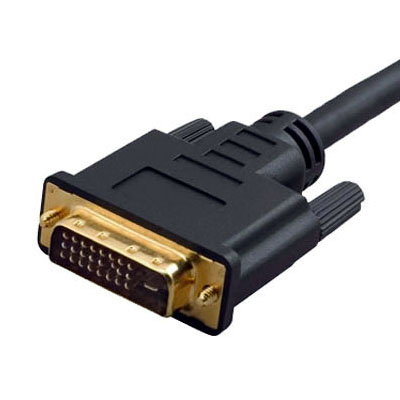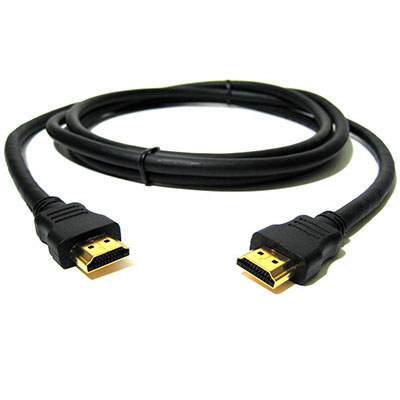|
|
| Line 1: |
Line 1: |
| | Back to [[Audio Visual]] | | Back to [[Audio Visual]] |
| − |
| |
| − | =Displays=
| |
| − |
| |
| − | ==Intro==
| |
| − | I aim to put the 'basics' up here over the next week or so. I'm really trying to avoid bogging down in technical details as there is plenty on the net to be found if you want to dig deeper - but to many people, "how/why it works" is really of no importance. Personally I'll be focusing on digital formats, as this is where the majority of the confusion lies. I'll post up for help/advice etc in the OCAU forums once there's some 'shape' to the section.
| |
| − |
| |
| − | ''Still very much a work in progress!''
| |
| − |
| |
| − | ==Categories==
| |
| − | ===Overview===
| |
| − | Today's TV/Display market is more confusing than ever before. In the past, CRT TVs were about the only option for the average buyer. Now, with models from any of the following catagories available for under $1000, it's now common to see once exotic technologies in the most modest homes.
| |
| − | ===CRT===
| |
| − | Cathode Ray Tube (CRT) is the common TV which most of us would have grown up with.
| |
| − | ===Rear-Projection===
| |
| − | ===Plasma===
| |
| − | ===LCD===
| |
| − | ===Projector===
| |
| − | If size matters the most, projectors are now a highly viable option for a true "Theatre" experience in your own home. Current technology now means that projectors can be bright, have good contrast, good resolution, be relatively quiet as well as affordable.
| |
| − |
| |
| − | ==Aspect Ratio==
| |
| − | In short, there are only 2 aspect ratios to consider when it comes to home theatre displays; 4:3 and 16:9.
| |
| − |
| |
| − | [http://www.superiorpapers.com essay papers]
| |
| − |
| |
| − | ==Resolution==
| |
| − | There's a LOT of 'technicalities' that can be discussed when referring to display resolution. To keep it simple, this section has been constrained to Australian, commonly accepted definions (especially in regard to Standard and High Definition (SD/HD). Hopefully the following information shows a logical progression of subject matter, and as such, will make best sense when read in order. Furthermore, the topic of interlaced and progressive displays will be included here, as the subjects go hand-in-hand.
| |
| − |
| |
| − | ===Interlaced vs Progressive===
| |
| − | In the common example of 1080i (i = interlaced) vs 1080p (p = progressive). 1080i and 1080p are both High Definition display formats for HDTVs. 1080i and 1080p signals actually contain the same information. Both 1080i and 1080p represent a 1920x1080 pixel resolution (1,920 pixels across the screen by 1,080 pixels down the screen). The difference between 1080i and 1080p is in the way the signal is sent from a source component or displayed on an HDTV screen.
| |
| − |
| |
| − | In 1080i each frame of video is sent or displayed in alternative fields. The fields in 1080i are composed of 540 rows of pixels or lines of pixels running from the top to the bottom of the screen, with the odd fields displayed first and the even fields displayed second. Together, both fields create a full frame, made up of all 1,080 pixel rows or lines, every 30th of a second.
| |
| − |
| |
| − | In 1080p, each frame of video is sent or displayed progressively. This means that both the odd and even fields (all 1,080 pixel rows or pixel lines) that make up the full frame are displayed together. This results in a smoother looking image, with less motion artifacts and jagged edges.
| |
| − |
| |
| − | ===Digital Video Resolutions===
| |
| − | This section refers to the ''signal'' or ''information'' from the source. Most source components (DVD players, TV tuners, gaming consoles, HTPCs etc) can produce a variety of resolutions, and this usually depends on the user settings, media used and the connections between the component and the display. Below shows how the different resolutions are often grouped. I have categorised the source component by their ''highest'' possible resolution output (e.g. a HTPC could produce resolutions as low as 640x480).
| |
| − |
| |
| − | Standard Definition - SD - 480 vertical lines
| |
| − | *SDTV (Standard Definition ''Digital'' TV)
| |
| − | *DVD (NTSC is 720x480)
| |
| − |
| |
| − | Extended Definition - ED - 576 vertical lines
| |
| − | *DVD (PAL is 720x576)
| |
| − |
| |
| − | High Definition - HD - 720 or 1080 vertical lines
| |
| − | *HDTV (High definition "Digital" TV)
| |
| − | *Xbox 360 (1080p)
| |
| − | *PlayStation 3 (1080p)
| |
| − | *HTPC (dependant on video card)
| |
| − |
| |
| − | ''In Australia, 576 has been grouped into the HD division by the government, and as such free-to-air channels (Ch7 specifically) can legitimately claim 576 as a HD broadcast.
| |
| − | ''
| |
| − | ===Native Screen Resolutions===
| |
| − | A list of common native screen resolutions.
| |
| − |
| |
| − | *852x480 - SD
| |
| − | *1024 x 768 - HD
| |
| − | *1024 x 1024 - HD
| |
| − | *1366 x 720 - HD
| |
| − | *1366 x 768 - HD
| |
| − | *1920x 1080 - HD
| |
| − |
| |
| − | etc
| |
| − |
| |
| − | ===Advertised Resolutions===
| |
| − | It's an absolute minefield of mis-leading, yet arguabely correct, information when both advertising and manufacturers specifications in regards to display's resolution. Many displays include "HD capable" or "HD ready" etc in their specifications which often mean the display can recieve a HD resolution input (say 1080) but potentially only has a screen with a native resolution (actual number of pixels) of 480 vertical lines. What this really means, is that the display can 'scale' the input signal to fill the screen appropriately. It does not mean it will neccesarily display a 720/1080 resolution image on the screen.
| |
| − |
| |
| − | ==Connections==
| |
| − | ===Composite===
| |
| − | *A set of standard video cables that come with most audio/visual components. Yellow connector is for video and th<!DOCTYPE html PUBLIC "-//W3C//DTD XHTML 1.0 Transitional//EN" "http://www.w3.org/TR/xhtml1/DTD/xhtml1-transitional.dtd">
| |
| − | <html xmlns="http://www.w3.org/1999/xhtml" xml:lang="en" lang="en" dir="ltr">
| |
| − | <head>
| |
| − | <meta http-equiv="Content-Type" content="text/html; charset=UTF-8" />
| |
| − | <meta http-equiv="Content-Style-Type" content="text/css" />
| |
| − | <meta name="generator" content="MediaWiki 1.15.1" />
| |
| − | <meta name="robots" content="noindex,nofollow" />
| |
| − | <link rel="alternate" type="application/x-wiki" title="Edit" href="/wiki/index.php?title=Displays&action=edit" />
| |
| − | <link rel="edit" title="Edit" href="/wiki/index.php?title=Displays&action=edit" />
| |
| − | <link rel="shortcut icon" href="/favicon.ico" />
| |
| − | <link rel="search" type="application/opensearchdescription+xml" href="/wiki/opensearch_desc.php" title="OCAU Wiki (en)" />
| |
| − | <link rel="alternate" type="application/rss+xml" title="OCAU Wiki RSS Feed" href="/wiki/index.php?title=Special:RecentChanges&feed=rss" />
| |
| − | <link rel="alternate" type="application/atom+xml" title="OCAU Wiki Atom Feed" href="/wiki/index.php?title=Special:RecentChanges&feed=atom" />
| |
| − | <title>Editing Displays - OCAU Wiki</title>
| |
| − | <link rel="stylesheet" href="/wiki/skins/common/shared.css?207" type="text/css" media="screen" />
| |
| − | <link rel="stylesheet" href="/wiki/skins/common/commonPrint.css?207" type="text/css" media="print" />
| |
| − | <link rel="stylesheet" href="/wiki/skins/monobook/main.css?207" type="text/css" media="screen" />
| |
| − | <!--[if lt IE 5.5000]><link rel="stylesheet" href="/wiki/skins/monobook/IE50Fixes.css?207" type="text/css" media="screen" /><![endif]-->
| |
| − | <!--[if IE 5.5000]><link rel="stylesheet" href="/wiki/skins/monobook/IE55Fixes.css?207" type="text/css" media="screen" /><![endif]-->
| |
| − | <!--[if IE 6]><link rel="stylesheet" href="/wiki/skins/monobook/IE60Fixes.css?207" type="text/css" media="screen" /><![endif]-->
| |
| − | <!--[if IE 7]><link rel="stylesheet" href="/wiki/skins/monobook/IE70Fixes.css?207" type="text/css" media="screen" /><![endif]-->
| |
| − | <link rel="stylesheet" href="/wiki/index.php?title=MediaWiki:Common.css&usemsgcache=yes&ctype=text%2Fcss&smaxage=18000&action=raw&maxage=18000" type="text/css" />
| |
| − | <link rel="stylesheet" href="/wiki/index.php?title=MediaWiki:Print.css&usemsgcache=yes&ctype=text%2Fcss&smaxage=18000&action=raw&maxage=18000" type="text/css" media="print" />
| |
| − | <link rel="stylesheet" href="/wiki/index.php?title=MediaWiki:Monobook.css&usemsgcache=yes&ctype=text%2Fcss&smaxage=18000&action=raw&maxage=18000" type="text/css" />
| |
| − | <link rel="stylesheet" href="/wiki/index.php?title=-&action=raw&maxage=18000&smaxage=0&ts=20100628082912&gen=css" type="text/css" />
| |
| − | <!--[if lt IE 7]><script type="text/javascript" src="/wiki/skins/common/IEFixes.js?207"></script>
| |
| − | <meta http-equiv="imagetoolbar" content="no" /><![endif]-->
| |
| − |
| |
| − | <script type= "text/javascript">/*<![CDATA[*/
| |
| − | var skin = "monobook";
| |
| − | var stylepath = "/wiki/skins";
| |
| − | var wgArticlePath = "/wiki/$1";
| |
| − | var wgScriptPath = "/wiki";
| |
| − | var wgScript = "/wiki/index.php";
| |
| − | var wgVariantArticlePath = false;
| |
| − | var wgActionPaths = {};
| |
| − | var wgServer = "http://www.overclockers.com.au";
| |
| − | var wgCanonicalNamespace = "";
| |
| − | var wgCanonicalSpecialPageName = false;
| |
| − | var wgNamespaceNumber = 0;
| |
| − | var wgPageName = "Displays";
| |
| − | var wgTitle = "Displays";
| |
| − | var wgAction = "edit";
| |
| − | var wgArticleId = "1660";
| |
| − | var wgIsArticle = false;
| |
| − | var wgUserName = "Judy123";
| |
| − | var wgUserGroups = ["*", "user", "autoconfirmed"];
| |
| − | var wgUserLanguage = "en";
| |
| − | var wgContentLanguage = "en";
| |
| − | var wgBreakFrames = false;
| |
| − | var wgCurRevisionId = 18570;
| |
| − | var wgVersion = "1.15.1";
| |
| − | var wgEnableAPI = true;
| |
| − | var wgEnableWriteAPI = true;
| |
| − | var wgSeparatorTransformTable = ["", ""];
| |
| − | var wgDigitTransformTable = ["", ""];
| |
| − | var wgRestrictionEdit = [];
| |
| − | var wgRestrictionMove = [];
| |
| − | var wgAjaxWatch = {"watchMsg": "Watch", "unwatchMsg": "Unwatch", "watchingMsg": "Watching…", "unwatchingMsg": "Unwatching…"};
| |
| − | /*]]>*/</script>
| |
| − |
| |
| − | <script type="text/javascript" src="/wiki/skins/common/wikibits.js?207"><!-- wikibits js --></script>
| |
| − | <!-- Head Scripts -->
| |
| − | <script type="text/javascript" src="/wiki/skins/common/edit.js?207"></script>
| |
| − | <script type="text/javascript" src="/wiki/skins/common/ajax.js?207"></script>
| |
| − | <script type="text/javascript" src="/wiki/skins/common/ajaxwatch.js?207"></script>
| |
| − | <script type="text/javascript" src="/wiki/index.php?title=-&action=raw&smaxage=0&gen=js&useskin=monobook"><!-- site js --></script>
| |
| − | </head>
| |
| − | <body class="mediawiki ltr ns-0 ns-subject page-Displays skin-monobook">
| |
| − | <div id="globalWrapper">
| |
| − | <div id="column-content">
| |
| − | <div id="content">
| |
| − | <a name="top" id="top"></a>
| |
| − | <h1 id="firstHeading" class="firstHeading">Editing Displays</h1>
| |
| − | <div id="bodyContent">
| |
| − | <h3 id="siteSub">From OCAU Wiki</h3>
| |
| − | <div id="contentSub"></div>
| |
| − | <div id="jump-to-nav">Jump to: <a href="#column-one">navigation</a>, <a href="#searchInput">search</a></div> <!-- start content -->
| |
| − | <div id="wikiPreview" class="ontop" style="display: none;"></div><div id='toolbar'>
| |
| − | <script type='text/javascript'>
| |
| − | /*<![CDATA[*/
| |
| − | addButton("/wiki/skins/common/images/button_bold.png","Bold text","\'\'\'","\'\'\'","Bold text","mw-editbutton-bold");
| |
| − | addButton("/wiki/skins/common/images/button_italic.png","Italic text","\'\'","\'\'","Italic text","mw-editbutton-italic");
| |
| − | addButton("/wiki/skins/common/images/button_link.png","Internal link","[[","]]","Link title","mw-editbutton-link");
| |
| − | addButton("/wiki/skins/common/images/button_extlink.png","External link (remember http:// prefix)","[","]","http://www.example.com link title","mw-editbutton-extlink");
| |
| − | addButton("/wiki/skins/common/images/button_headline.png","Level 2 headline","\n== "," ==\n","Headline text","mw-editbutton-headline");
| |
| − | addButton("/wiki/skins/common/images/button_image.png","Embedded file","[[File:","]]","Example.jpg","mw-editbutton-image");
| |
| − | addButton("/wiki/skins/common/images/button_media.png","File link","[[Media:","]]","Example.ogg","mw-editbutton-media");
| |
| − | addButton("/wiki/skins/common/images/button_math.png","Mathematical formula (LaTeX)","\x3cmath\x3e","\x3c/math\x3e","Insert formula here","mw-editbutton-math");
| |
| − | addButton("/wiki/skins/common/images/button_nowiki.png","Ignore wiki formatting","\x3cnowiki\x3e","\x3c/nowiki\x3e","Insert non-formatted text here","mw-editbutton-nowiki");
| |
| − | addButton("/wiki/skins/common/images/button_sig.png","Your signature with timestamp","--[[User:Judy123|Judy123]] 08:30, 28 June 2010 (UTC)","","","mw-editbutton-signature");
| |
| − | addButton("/wiki/skins/common/images/button_hr.png","Horizontal line (use sparingly)","\n----\n","","","mw-editbutton-hr");
| |
| − | /*]]>*/
| |
| − | </script>
| |
| − | </div>
| |
| − | <form id="editform" name="editform" method="post" action="/wiki/index.php?title=Displays&action=submit" enctype="multipart/form-data">
| |
| − | <input type='hidden' value="" name="wpSection" />
| |
| − | <input type='hidden' value="20100628082947" name="wpStarttime" />
| |
| − |
| |
| − | <input type='hidden' value="20100302054557" name="wpEdittime" />
| |
| − |
| |
| − | <input type='hidden' value="" name="wpScrolltop" id="wpScrolltop" />
| |
| − |
| |
| − | <input name="wpAutoSummary" type="hidden" value="d41d8cd98f00b204e9800998ecf8427e" />
| |
| − |
| |
| − | <textarea name="wpTextbox1" id="wpTextbox1" cols="80" rows="25" tabindex="1" accesskey=",">Back to [[Audio Visual]]
| |
| | | | |
| | =Displays= | | =Displays= |
I aim to put the 'basics' up here over the next week or so. I'm really trying to avoid bogging down in technical details as there is plenty on the net to be found if you want to dig deeper - but to many people, "how/why it works" is really of no importance. Personally I'll be focusing on digital formats, as this is where the majority of the confusion lies. I'll post up for help/advice etc in the OCAU forums once there's some 'shape' to the section.
Today's TV/Display market is more confusing than ever before. In the past, CRT TVs were about the only option for the average buyer. Now, with models from any of the following catagories available for under $1000, it's now common to see once exotic technologies in the most modest homes.
Cathode Ray Tube (CRT) is the common TV which most of us would have grown up with.
If size matters the most, projectors are now a highly viable option for a true "Theatre" experience in your own home. Current technology now means that projectors can be bright, have good contrast, good resolution, be relatively quiet as well as affordable.
In short, there are only 2 aspect ratios to consider when it comes to home theatre displays; 4:3 and 16:9.
There's a LOT of 'technicalities' that can be discussed when referring to display resolution. To keep it simple, this section has been constrained to Australian, commonly accepted definions (especially in regard to Standard and High Definition (SD/HD). Hopefully the following information shows a logical progression of subject matter, and as such, will make best sense when read in order. Furthermore, the topic of interlaced and progressive displays will be included here, as the subjects go hand-in-hand.
In the common example of 1080i (i = interlaced) vs 1080p (p = progressive). 1080i and 1080p are both High Definition display formats for HDTVs. 1080i and 1080p signals actually contain the same information. Both 1080i and 1080p represent a 1920x1080 pixel resolution (1,920 pixels across the screen by 1,080 pixels down the screen). The difference between 1080i and 1080p is in the way the signal is sent from a source component or displayed on an HDTV screen.
In 1080i each frame of video is sent or displayed in alternative fields. The fields in 1080i are composed of 540 rows of pixels or lines of pixels running from the top to the bottom of the screen, with the odd fields displayed first and the even fields displayed second. Together, both fields create a full frame, made up of all 1,080 pixel rows or lines, every 30th of a second.
In 1080p, each frame of video is sent or displayed progressively. This means that both the odd and even fields (all 1,080 pixel rows or pixel lines) that make up the full frame are displayed together. This results in a smoother looking image, with less motion artifacts and jagged edges.
A list of common native screen resolutions.
It's an absolute minefield of mis-leading, yet arguabely correct, information when both advertising and manufacturers specifications in regards to display's resolution. Many displays include "HD capable" or "HD ready" etc in their specifications which often mean the display can recieve a HD resolution input (say 1080) but potentially only has a screen with a native resolution (actual number of pixels) of 480 vertical lines. What this really means, is that the display can 'scale' the input signal to fill the screen appropriately. It does not mean it will neccesarily display a 720/1080 resolution image on the screen.
![[Main Page]](http://www.overclockers.com.au/wiki/skins/common/images/wiki.png)
